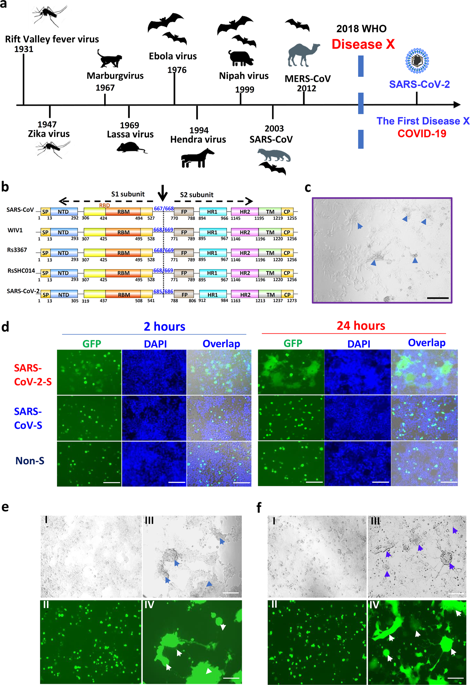Our official English website, www.x-mol.net, welcomes your
feedback! (Note: you will need to create a separate account there.)
Inhibition of SARS-CoV-2 (previously 2019-nCoV) infection by a highly potent pan-coronavirus fusion inhibitor targeting its spike protein that harbors a high capacity to mediate membrane fusion.
Cell Research ( IF 28.1 ) Pub Date : 2020-03-30 , DOI: 10.1038/s41422-020-0305-x Shuai Xia 1 , Meiqin Liu 2, 3 , Chao Wang 4 , Wei Xu 1 , Qiaoshuai Lan 1 , Siliang Feng 4 , Feifei Qi 5 , Linlin Bao 5 , Lanying Du 6 , Shuwen Liu 7 , Chuan Qin 5 , Fei Sun 8 , Zhengli Shi 2 , Yun Zhu 8 , Shibo Jiang 1, 6 , Lu Lu 1
Cell Research ( IF 28.1 ) Pub Date : 2020-03-30 , DOI: 10.1038/s41422-020-0305-x Shuai Xia 1 , Meiqin Liu 2, 3 , Chao Wang 4 , Wei Xu 1 , Qiaoshuai Lan 1 , Siliang Feng 4 , Feifei Qi 5 , Linlin Bao 5 , Lanying Du 6 , Shuwen Liu 7 , Chuan Qin 5 , Fei Sun 8 , Zhengli Shi 2 , Yun Zhu 8 , Shibo Jiang 1, 6 , Lu Lu 1
Affiliation

|
The recent outbreak of coronavirus disease (COVID-19) caused by SARS-CoV-2 infection in Wuhan, China has posed a serious threat to global public health. To develop specific anti-coronavirus therapeutics and prophylactics, the molecular mechanism that underlies viral infection must first be defined. Therefore, we herein established a SARS-CoV-2 spike (S) protein-mediated cell-cell fusion assay and found that SARS-CoV-2 showed a superior plasma membrane fusion capacity compared to that of SARS-CoV. We solved the X-ray crystal structure of six-helical bundle (6-HB) core of the HR1 and HR2 domains in the SARS-CoV-2 S protein S2 subunit, revealing that several mutated amino acid residues in the HR1 domain may be associated with enhanced interactions with the HR2 domain. We previously developed a pan-coronavirus fusion inhibitor, EK1, which targeted the HR1 domain and could inhibit infection by divergent human coronaviruses tested, including SARS-CoV and MERS-CoV. Here we generated a series of lipopeptides derived from EK1 and found that EK1C4 was the most potent fusion inhibitor against SARS-CoV-2 S protein-mediated membrane fusion and pseudovirus infection with IC50s of 1.3 and 15.8 nM, about 241- and 149-fold more potent than the original EK1 peptide, respectively. EK1C4 was also highly effective against membrane fusion and infection of other human coronavirus pseudoviruses tested, including SARS-CoV and MERS-CoV, as well as SARSr-CoVs, and potently inhibited the replication of 5 live human coronaviruses examined, including SARS-CoV-2. Intranasal application of EK1C4 before or after challenge with HCoV-OC43 protected mice from infection, suggesting that EK1C4 could be used for prevention and treatment of infection by the currently circulating SARS-CoV-2 and other emerging SARSr-CoVs.
更新日期:2020-04-24











































 京公网安备 11010802027423号
京公网安备 11010802027423号